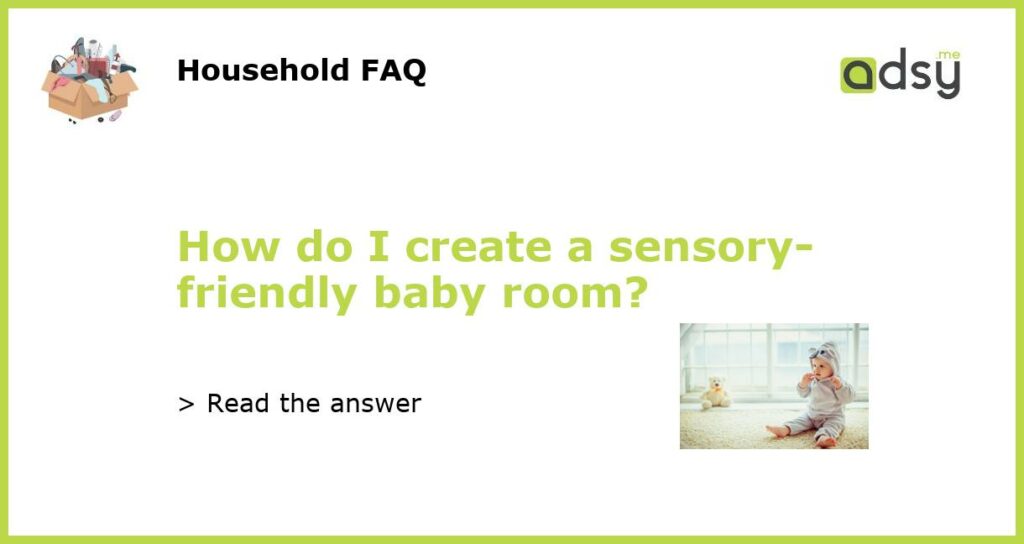Understanding Sensory Sensitivities in Babies
Creating a sensory-friendly baby room is essential for promoting the well-being and development of babies with sensory sensitivities. Sensory sensitivities refer to the amplified reactions or aversions that babies may have towards certain stimuli, such as sounds, lights, textures, or even smells. These sensitivities can be overwhelming for babies and may lead to distress, anxiety, or agitation. By understanding the unique sensory needs of your baby, you can create a nurturing and calming environment that supports their growth and development.
Designing a Calm and Soothing Space
When designing a sensory-friendly baby room, it is important to focus on creating a calm and soothing space by minimizing sensory triggers. Here are a few tips to consider:
Control Lighting
Babies with sensory sensitivities may be sensitive to bright lights or fluorescent lighting. Consider using soft, dimmable lights or warm-toned bulbs that create a cozy atmosphere. Using blackout curtains or blinds can also help regulate the amount of natural light entering the room.
Choose Soothing Colors
The choice of colors in the room can significantly impact the sensory experience for your baby. Opt for soft, neutral colors such as pastels or muted tones instead of vibrant or bold colors, which can be overstimulating. Soft blues, greens, or earthy tones can create a calming effect and promote relaxation.
Use Sound Insulation
Babies with sensory sensitivities may be easily overwhelmed by loud or sudden noises. Incorporate sound insulation techniques in the room to reduce external noises. You can use acoustic panels, heavy curtains, or soft rugs to absorb sound. It is also beneficial to choose quieter appliances and opt for white noise machines or soft lullabies to create a soothing auditory environment.
Provide Comfortable Textures
Consider the textures of the materials used in the baby room. Avoid materials that may be rough or scratchy, such as certain types of upholstery or bedding. Instead, opt for soft, plush fabrics that provide comfort and tactile stimulation. Choose cozy rugs, soft blankets, and comfortable bedding to create a tactile-rich environment.
Organize and Minimize Clutter
Clutter can be overwhelming for babies with sensory sensitivities. Keep the room organized and free from unnecessary objects or visual distractions. Use storage solutions to keep toys and other items out of sight when not in use. A clutter-free environment promotes a sense of calm and allows your baby to focus on their surroundings without feeling overwhelmed.






